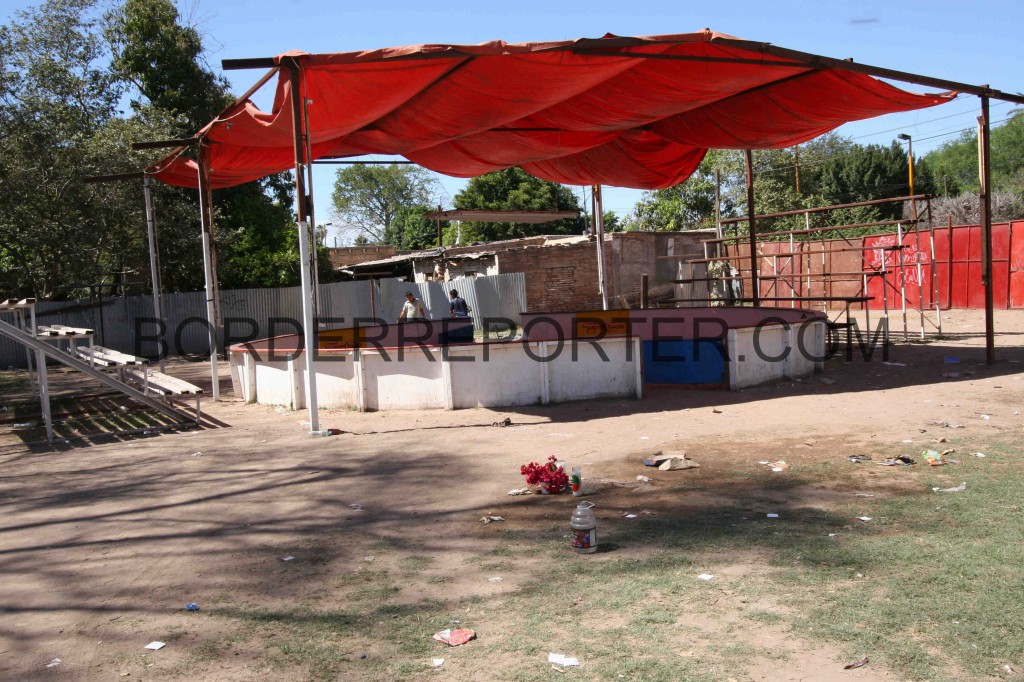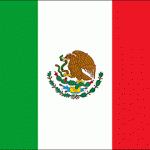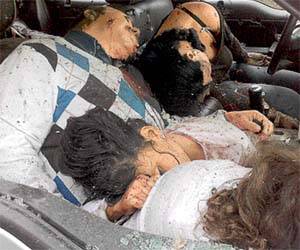Politics
When a 600-pound coke run nets you 2 years
Dec 8th, 2009 | By Michel Marizco | Category: General News, PoliticsTHE BORDER REPORT
Old Stories Never Die; Even When its Characters Do
Nov 2nd, 2009 | By Michel Marizco | Category: General News, Organized Crime, Politics Neighbors tell a different story from the official version. Yes, there was a cockfight, they say; then some men pulled up and walked in, held the small crowd at gunpoint then pulled four men to the side, Montes' son was one of them. They lined them up and executed them. No arrest was ever made. Two hundred people were at the cockfight; the lone cop ran away to get help. The blood was hours old, coagulating in the dust when I arrived. Nobody saw a thing.
I went to talk to Montes about his son's murder, following this theme of secretos. Myself and a colleague were escorted in to his hacienda with marvelous walls of cut stone and an airy hall with an enormous oak table inside. "Where were the police?" he yelled. "Where was anybody? We don't know what happened there but we have a good idea! This governor, (Bours at the time), is involved in themes that are despicable."
Nothing he could prove, like always, like anything involving organized crime investigations in Mexico. But Montes had it out for former Gov. Bours. In early 2008, he and his people colllaborated with a popular Mexican magazine, showing reporters this man that the mag then portrayed as "El Narco-Gobernador." It was a fairly irresponsible piece, in many ways. Lots of speculation, lots of tenuous connections between the Bours family's dollars and the Sinaloa Federation that fell apart upon closer examination. Yet, the day that issue of Proceso Magazine hit the stands, state employees from Nogales to Navajoa bought up every copy.
Here in Arizona, the official word from the FBI was that Montes' son was murdered in some shady transaction. And perhaps that is true as well. I certainly would never accuse a man of murder without definite proof. And that's proof I don't have. I just have a dead man's words, thankfully recorded in audio. Let's see what the investigation concludes. We'll do well to remember that Montes paid for a criminal investigation of his own son's murder; the alleged killers, whom he claimed Bours was protecting, were set free.
Neighbors tell a different story from the official version. Yes, there was a cockfight, they say; then some men pulled up and walked in, held the small crowd at gunpoint then pulled four men to the side, Montes' son was one of them. They lined them up and executed them. No arrest was ever made. Two hundred people were at the cockfight; the lone cop ran away to get help. The blood was hours old, coagulating in the dust when I arrived. Nobody saw a thing.
I went to talk to Montes about his son's murder, following this theme of secretos. Myself and a colleague were escorted in to his hacienda with marvelous walls of cut stone and an airy hall with an enormous oak table inside. "Where were the police?" he yelled. "Where was anybody? We don't know what happened there but we have a good idea! This governor, (Bours at the time), is involved in themes that are despicable."
Nothing he could prove, like always, like anything involving organized crime investigations in Mexico. But Montes had it out for former Gov. Bours. In early 2008, he and his people colllaborated with a popular Mexican magazine, showing reporters this man that the mag then portrayed as "El Narco-Gobernador." It was a fairly irresponsible piece, in many ways. Lots of speculation, lots of tenuous connections between the Bours family's dollars and the Sinaloa Federation that fell apart upon closer examination. Yet, the day that issue of Proceso Magazine hit the stands, state employees from Nogales to Navajoa bought up every copy.
Here in Arizona, the official word from the FBI was that Montes' son was murdered in some shady transaction. And perhaps that is true as well. I certainly would never accuse a man of murder without definite proof. And that's proof I don't have. I just have a dead man's words, thankfully recorded in audio. Let's see what the investigation concludes. We'll do well to remember that Montes paid for a criminal investigation of his own son's murder; the alleged killers, whom he claimed Bours was protecting, were set free. Another Top Border Official Taken Down
Sep 25th, 2009 | By Michel Marizco | Category: General News, Organized Crime, PoliticsTHE BORDER REPORT
For the second time in a month, a high level border official has been indicted, this time accused of shredding evidence for the Stanford Financial Group, a group busted by the Feds last year for bilking investors out of nearly $7 billion. Lesser known but arguably more profound, the investment group had been laundering money for Amado Carrillo Fuentes' Juárez Cartel.
Tom Raffanello was the Special Agent in Charge for Arizona between 1996 and 2002 when he then headed the DEA's Miami office before retiring five years ago.
Banderas Unidos
Aug 25th, 2009 | By Michel Marizco | Category: General News, Immigration, PoliticsTHE BORDER REPORT
 Assuming everyone was in on the job, you can imagine the back-end dealings that went into this quiet negotiation. The Space Shuttle Discovery that's set to launch will be carrying at least two flags onboard, the green, blue and yellow of the U.S. Border Patrol and the red, white and green of México.
Assuming everyone was in on the job, you can imagine the back-end dealings that went into this quiet negotiation. The Space Shuttle Discovery that's set to launch will be carrying at least two flags onboard, the green, blue and yellow of the U.S. Border Patrol and the red, white and green of México.
The Border Patrol, that golden-haired child of the American federal law enforcement agencies, is riding high, shipping its colors off into outer space onboard the Space Shuttle Discovery, then sending the returning flag to the Border Patrol museum.



